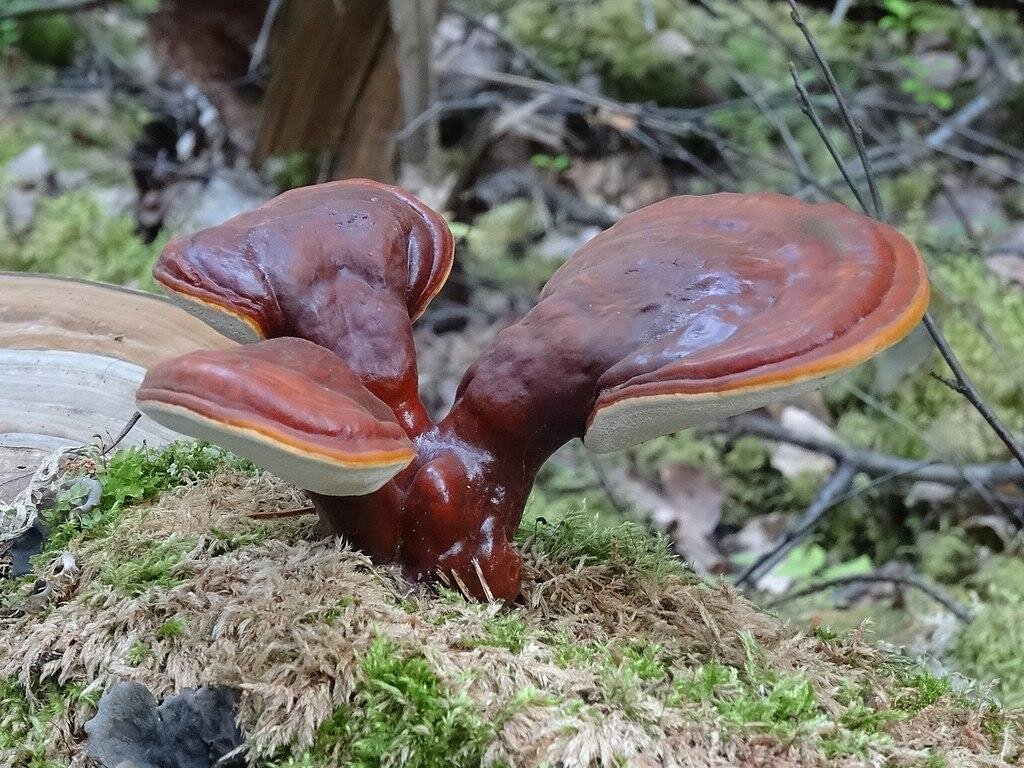Important Facts For Prelims
Ganoderma Lucidum: Magical Mushroom
- 07 Apr 2022
- 4 min read
Why in News?
Recently, worldwide attempts are being made to popularise Ganoderma lucidum (Magical Mushroom) for business and livelihood, by cultivating it on wood logs and sawdust.
What are Magical Mushrooms?
- It is a medicinal mushroom in use for centuries to heal diseases like diabetes, cancer, inflammation, ulcer as well as bacterial and skin infections.
- In India, however, the potential of the fungus is still being explored.
- It is considered one of the most important medicinal mushrooms in the world since its chemical constituents exhibit numerous medicinal properties.
- They have earned it monikers such as “mushroom of immortality”, “celestial herb” and “auspicious herb”. It is globally also known as “red reishi mushroom”.
- The history of consumption of this mushroom can be traced back to 5,000 years ago in China. It also finds mention in the historical and medical records of countries like Japan, Korea, Malaysia and India.
- Unlike normal mushrooms, the peculiar character of this one is that it grows on wood or wood-based substrate only.
- It thrives well in warm and humid climates, and grows preferably in mixed forests of subtropical to temperate regions.
- It contains more than 400 chemical constituents, including triterpenes, polysaccharides, nucleotides, alkaloids, steroids, amino acids, fatty acids and phenols.
- These show medicinal properties such as immunomodulatory, anti-hepatitis, anti-tumour, antioxidant, antimicrobial, anti- Human Immunodeficiency Virus (HIV), anti- malarial, hypoglycaemic and anti-inflammatory properties.
- Apart from medicines, Ganoderma lucidum is also used as a base material for manufacturing products such as tea, coffee, energy supplements, health boosters, beverages, baked goods and anti-ageing cosmetics.
What is the Scope of Cultivating it in India?
- Its mass production is restricted to countries like China, Japan, Korea, Malaysia, Thailand and the United States of America.
- Awareness regarding Ganoderma is spreading and the demand of this mushroom has pushed many countries, including India, to produce it on a large scale and manufacture its products.
- India, a country where a majority of population primarily relies on agriculture, has great potential to cultivate this mushroom.
- It can be grown indoors and is thus safe from the impacts of extreme weather conditions, man-wildlife conflicts, harsh topography and poor soil conditions.
- In India, the mushroom is mostly restricted to laboratory research at present. Some successful attempts for its cultivation, however, have been made by various Indian organisations.
- It is cultivated on wood logs (locally called billets) in the country.
- It can have immense potential for livelihood generation, but there are some challenges as well.
- The dried fruiting bodies or raw powder of Ganoderma lucidum can be sold at Rs 4,000-5000 per kilogram.





